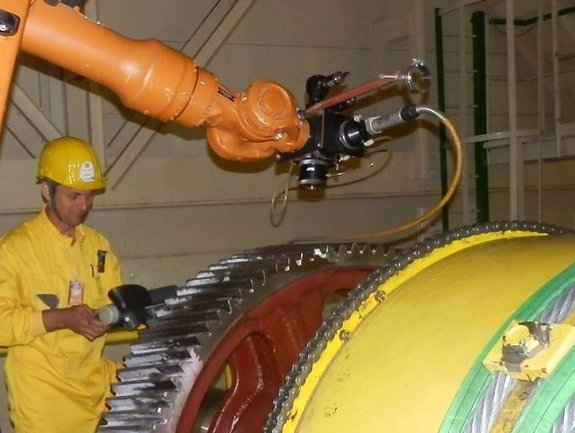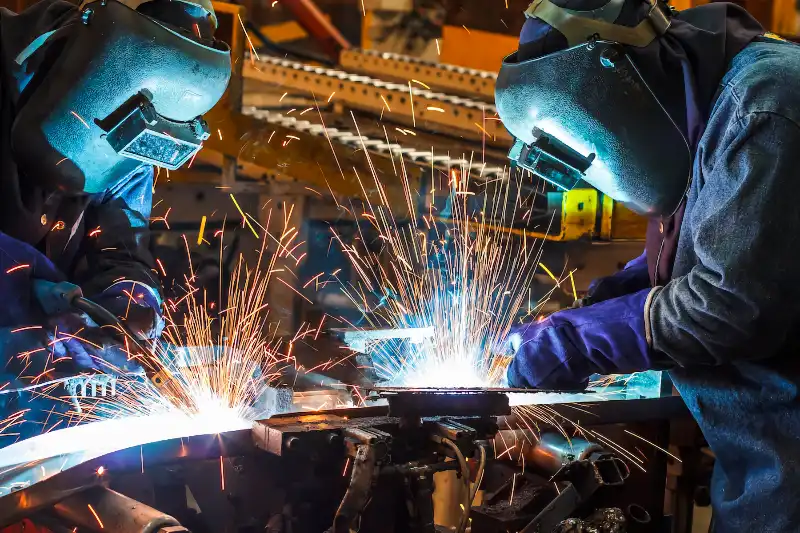Common Welding Repair Service Issues and Just How to Address Them Effectively
Welding repair services frequently encounter a series of concerns that can jeopardize the honesty of the last item. Usual issues include poor penetration, porosity, and imbalance, to name a few. Each issue provides special obstacles that require details methods for resolution. Understanding these concerns is crucial for welders aiming to enhance their skills and outcomes. This discussion will explore these typical welding repair service problems and effective techniques to resolve them.
Inadequate Infiltration
Poor penetration occurs when the weld metal falls short to totally fuse with the base material, leading to weak joints and potential architectural failures. This issue frequently stems from insufficient warmth input, inaccurate electrode angle, or incorrect welding rate. Welders might run into inadequate penetration due to a miscalculation of the essential criteria for a specific material thickness or type. Additionally, contamination on the base product's surface can hinder effective bonding, worsening the problem. To address poor infiltration, welders need to guarantee appropriate setups on their equipment and preserve a clean job surface area. Routine assessment of welds is recommended to determine any deficiencies early, enabling timely improvements and the avoidance of endangered structural stability in welded settings up.
Porosity
Porosity is an usual defect in welded joints that shows up as tiny gas bubbles caught within the weld steel. This issue can jeopardize the stability of the weld, resulting in decreased strength and possible failing under tension. Montana Mobile Welding and Repair Belgrade Welding. Porosity generally arises from contamination, dampness, or incorrect welding strategies, which permit gases to run away right into the molten weld pool. To attend to porosity, welders need to assure appropriate surface area preparation, keep a tidy workplace, and make use of ideal welding criteria. In addition, choosing the right filler product and shielding gas can mitigate gas entrapment. Normal assessment and screening of welds can help identify porosity early, ensuring prompt corrective activities are taken, thus preserving the top quality and dependability of the bonded structure
Misalignment
Imbalance in welding can emerge from various factors, consisting of incorrect configuration and thermal development. Recognizing the source is necessary for reliable resolution. Numerous adjustment methods are readily available to straighten parts and ensure structural honesty.
Root causes of Imbalance
Welding imbalance typically stems from a selection of underlying issues that can compromise architectural honesty. One key cause is incorrect fit-up of elements prior to welding, which can cause gaps and irregular surfaces. Variations in thermal expansion during the welding procedure can also lead to distortion, specifically if the products being joined have various coefficients of expansion. In addition, inadequate fixturing and clamping may fall short to hold elements securely in position, causing activity throughout welding. Poorly conserved equipment, including welding equipments and tools, might introduce incongruities in the weld grain, further adding to imbalance. Finally, operator error, coming from inadequate training or experience, can additionally play a substantial function in producing misaligned welds.
Modification Strategies Available
Attending to imbalance efficiently calls for a mix of rehabilitative methods customized to the specific issues available. One common technique is using fixtures or jigs to hold parts in the right position during welding, making sure consistent alignment. In addition, preheating the products can aid minimize distortion and improve fit-up. For significant misalignment, mechanical realignment methods, such as using hydraulic jacks or clamps, can be utilized to fix the placement before welding. Post-weld warm therapy might likewise be needed to ease anxieties created by imbalance. Lastly, mindful evaluation and change throughout the configuration phase can prevent misalignment problems from coming to be considerable issues, advertising a smoother welding process and improving general architectural honesty.
Distortion
Distortion is a common difficulty in welding that can arise from various variables, including uneven cooling and heating. Recognizing the reasons for distortion is important for carrying out efficient prevention techniques. Addressing this problem not only improves structural integrity yet also improves the overall quality of the weld.
Causes of Distortion
When based on the intense heat of welding, materials often undergo adjustments that can result in distortion. This phenomenon mostly arises from thermal expansion and tightening during the welding procedure. As the weld area heats up, the product increases; upon cooling, it acquires, which can create interior stress and anxieties. In enhancement, unequal heating throughout a workpiece can exacerbate these stress and anxieties, leading to warping or flexing. The sort of material additionally plays a considerable role; steels with differing thermal conductivity and coefficients of development might respond differently, bring about unpredictable distortions. Additionally, poor joint style and poor fixturing can add to misalignment throughout welding, increasing the probability of distortion. Recognizing these causes is necessary for effective welding repair service and avoidance techniques.
Prevention Techniques
Reliable prevention methods for distortion during welding emphasis on managing heat input and ensuring appropriate joint layout. Keeping a regular heat input assists to decrease thermal expansion and contraction, which can cause distortion. Making use of methods such as pre-heating the work surface can additionally lower the temperature level gradient, promoting consistent home heating. In addition, selecting suitable joint layouts, such as T-joints or lap joints, can improve security and minimize stress and anxiety focus. Implementing proper fixturing to secure the workpieces in position even more help in maintaining positioning during the welding process. Staggered welding sequences can disperse warmth extra uniformly, preventing localized distortion. By applying these approaches, welders can greatly lower the chance of distortion and boost the overall quality of their welds.
Fracturing
Breaking is a typical concern encountered in welding repair work, commonly arising from various aspects such as inappropriate cooling rates, material option, or poor joint preparation. The incident of splits can significantly jeopardize the integrity of the weld, leading to possible failings throughout procedure. To address this problem, welders have to initially assess the source, making sure that materials work and properly selected for the details application. Furthermore, controlling the cooling price during the welding procedure is crucial; fast cooling can induce stress and anxiety and bring about fracturing. Correct joint design and prep work also contribute to lessening the danger. Carrying out these strategies can enhance weld top click here quality and sturdiness, ultimately minimizing the chance of cracking in finished weldments.

Incomplete Fusion
A significant issue in welding repairs is incomplete blend, which happens when the weld steel does not properly bond with the base product or previous weld passes - Montana Mobile Welding and Repair Belgrade. This defect can cause weaknesses in the joint, possibly compromising the stability of the welded structure. Aspects adding to incomplete fusion include inadequate warm input, improper welding strategy, and contamination of the surfaces being signed up with. To resolve this problem successfully, welders need to assure correct pre-weld cleansing and surface preparation, in addition to readjust their welding parameters to achieve ample penetration and blend. Routine inspection throughout the welding process can likewise assist determine incomplete combination early, allowing for prompt rehabilitative steps to boost the overall top quality of the weld
Overheating
While welding fixings can boost structural integrity, overheating presents a substantial obstacle that can cause material destruction. Excessive warm during welding can modify the mechanical homes of steels, leading to minimized strength, enhanced brittleness, and warping. This sensation is especially vital in high-stress applications where structural reliability is paramount. Recognizing overheating can include aesthetic inspections for staining or distortion, in addition to keeping track of temperature throughout the welding process. To minimize the risks connected with overheating, welders ought to employ ideal methods, such as managing warm input, readjusting traveling speed, and using appropriate filler products. Furthermore, implementing pre- and post-weld heat therapies can help restore product residential properties and enhance the overall top quality of the repair work, making certain long-lasting performance and security.
Frequently Asked Questions
What Are the Usual Indications of a Welding Defect?

Exactly How Can I Test My Welds for Top quality?
To check welds for quality, one can make use of aesthetic assessments, ultrasonic testing, and radiographic techniques. Each strategy guarantees structural stability, determines problems, and confirms adherence to specified standards, ultimately improving the reliability of the welded joints.
What Safety and security Safety Measures Should I Take While Welding?
When welding, one should prioritize safety and security by using ideal personal safety devices, making sure appropriate ventilation, safeguarding combustible products away, maintaining a clean work area, and recognizing environments to protect against crashes and injuries.
Can I Fix a Weld Without Remodeling the Entire Joint?
Fixing a weld without renovating the entire joint is feasible, depending on the damage (Belgrade). Techniques such as grinding, adding filler material, or using a welding process can successfully attend to specific problems while maintaining the surrounding framework
What Tools Are Vital for Efficient Welding Fixes?
Crucial devices for effective welding repairs include a welding device, cable brush, mill, safety equipment, clamps, and filler products. Each tool plays an essential duty in guaranteeing high quality and safety and security throughout the repair service process. Porosity usually occurs from contamination, moisture, or inappropriate welding techniques, which allow gases to get away into the liquified weld swimming pool. Improperly kept equipment, including welding machines and tools, might introduce disparities in the weld bead, more contributing to misalignment. When subjected to the extreme warm of welding, materials usually go through modifications that can lead to distortion. Breaking is an usual problem run into in welding repair work, usually resulting from numerous variables such as inappropriate air conditioning rates, product option, or insufficient joint preparation. A significant concern in welding repair work is incomplete fusion, which takes place when the weld metal does not effectively bond with the base product or previous weld passes.